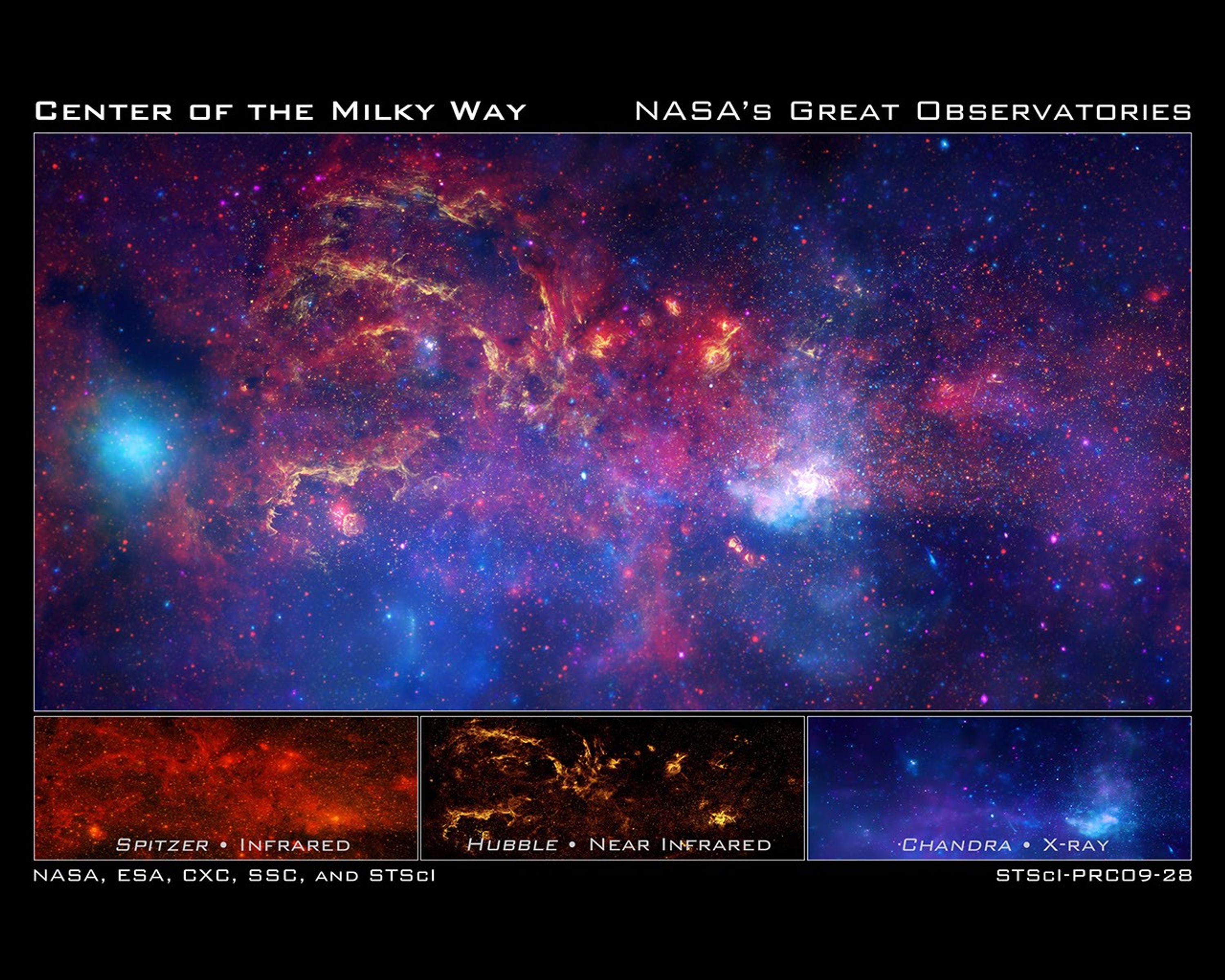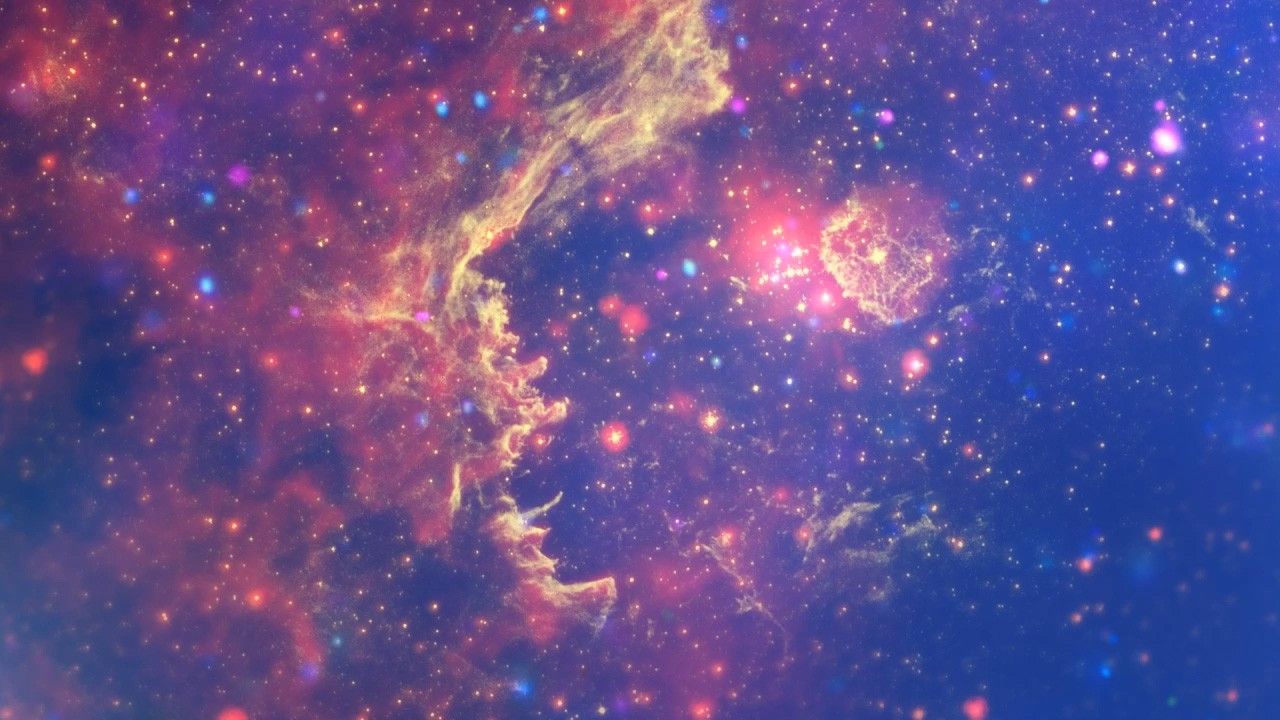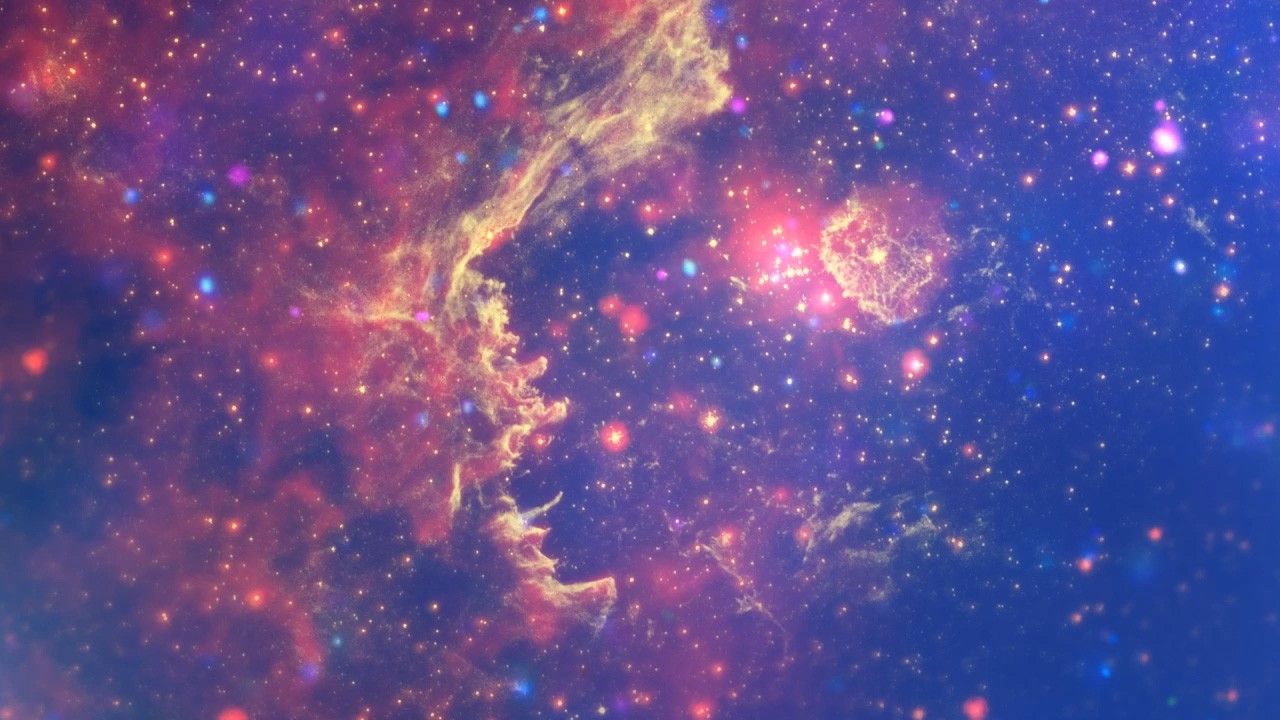1 min read
Galactic Center Region in Infrared from Spitzer

About the Object
- R.A. PositionR.A. PositionRight ascension – analogous to longitude – is one component of an object's position.17h 45m 36.0s
- Dec. PositionDec. PositionDeclination – analogous to latitude – is one component of an object's position.-28° 55' 58.8"
- ConstellationConstellationOne of 88 recognized regions of the celestial sphere in which the object appears.Sagittarius
- DistanceDistanceThe physical distance from Earth to the astronomical object. Distances within our solar system are usually measured in Astronomical Units (AU). Distances between stars are usually measured in light-years. Interstellar distances can also be measured in parsecs.26,000 light-years (8 kiloparsecs)
- DimensionsDimensionsThe physical size of the object or the apparent angle it subtends on the sky.The image of the galactic center is 32.5 arcminutes (246 light-years or 75.5 parsecs) wide.
About the Data
- Data DescriptionData DescriptionProposal: A description of the observations, their scientific justification, and the links to the data available in the science archive.
Science Team: The astronomers who planned the observations and analyzed the data. "PI" refers to the Principal Investigator.The Spitzer Space Telescope data were courtesy of NASA, Jet Propulsion Laboratory, and S. Stolovy (Spitzer Science Center/California Institute of Technology). - InstrumentInstrumentThe science instrument used to produce the data.SST>IRAC
- Exposure DatesExposure DatesThe date(s) that the telescope made its observations and the total exposure time.September 3, 2004, and September 15, 2005
- FiltersFiltersThe camera filters that were used in the science observations.3.6 microns, 4.5 microns, 5.8 microns, and 8.0 microns
- Object NameObject NameA name or catalog number that astronomers use to identify an astronomical object.Galactic Center
- Object DescriptionObject DescriptionThe type of astronomical object.Center of the Milky Way Galaxy
- Release DateNovember 10, 2009
- Science ReleaseNASA’s Great Observatories Celebrate International Year of Astronomy
- Credit
Related Images & Videos

NASA's Great Observatories Examine the Galactic Center Region (With Title)
In celebration of the International Year of Astronomy 2009, NASA's Great Observatories – the Hubble Space Telescope, the Spitzer Space Telescope, and the Chandra X-ray Observatory – have collaborated to produce an unprecedented image of the central region of our Milky Way...

NASA's Great Observatories Examine the Galactic Center Region
In celebration of the International Year of Astronomy 2009, NASA's Great Observatories – the Hubble Space Telescope, the Spitzer Space Telescope, and the Chandra X-ray Observatory – have collaborated to produce an unprecedented image of the central region of our Milky Way...

NASA's Great Observatories Present Unique Views of the Center of the Milky Way
In celebration of the International Year of Astronomy 2009, NASA's Great Observatories – the Hubble Space Telescope, the Spitzer Space Telescope, and the Chandra X-ray Observatory – have produced a matched trio of images of the central region of our Milky Way galaxy. Each image...

Galactic Center Region in Near-Infrared from Hubble
Although best known for its visible-light images, the Hubble Space Telescope also observes over a limited range of infrared light. The galactic center is marked by the bright patch in the lower right. Along the left side are large arcs of warm gas that have been heated by...

Galactic Center Region in X-rays from Chandra
X-rays detected by the Chandra X-ray Observatory expose a wealth of exotic objects and high-energy features. In this image, pink represents lower energy X-rays and blue indicates higher energy. Hundreds of small dots show emission from material around black holes and other dense...

Views of the Galactic Center Region from NASA's Great Observatories
In celebration of the International Year of Astronomy 2009, NASA's Great Observatories – the Hubble Space Telescope, the Spitzer Space Telescope, and the Chandra X-ray Observatory – have collaborated to produce an unprecedented image of the central region of our Milky Way...

Galactic Center Pan Animation
The mysterious heart of our Milky Way galaxy is unveiled in new detail in this color composite image. The power of all three of NASA's Great Observatories – Spitzer, Chandra, and Hubble, had been brought to bear on the tumultuous galactic core. The colorful spectacle of stellar...

Galactic Center Pan Animation (Narrated)
The mysterious heart of our Milky Way galaxy is unveiled in new detail in this color composite image. The power of all three of NASA's Great Observatories – Spitzer, Chandra, and Hubble, had been brought to bear on the tumultuous galactic core. The colorful spectacle of stellar...
Share
Details
Claire Andreoli
NASA’s Goddard Space Flight Center
Greenbelt, Maryland
claire.andreoli@nasa.gov





























